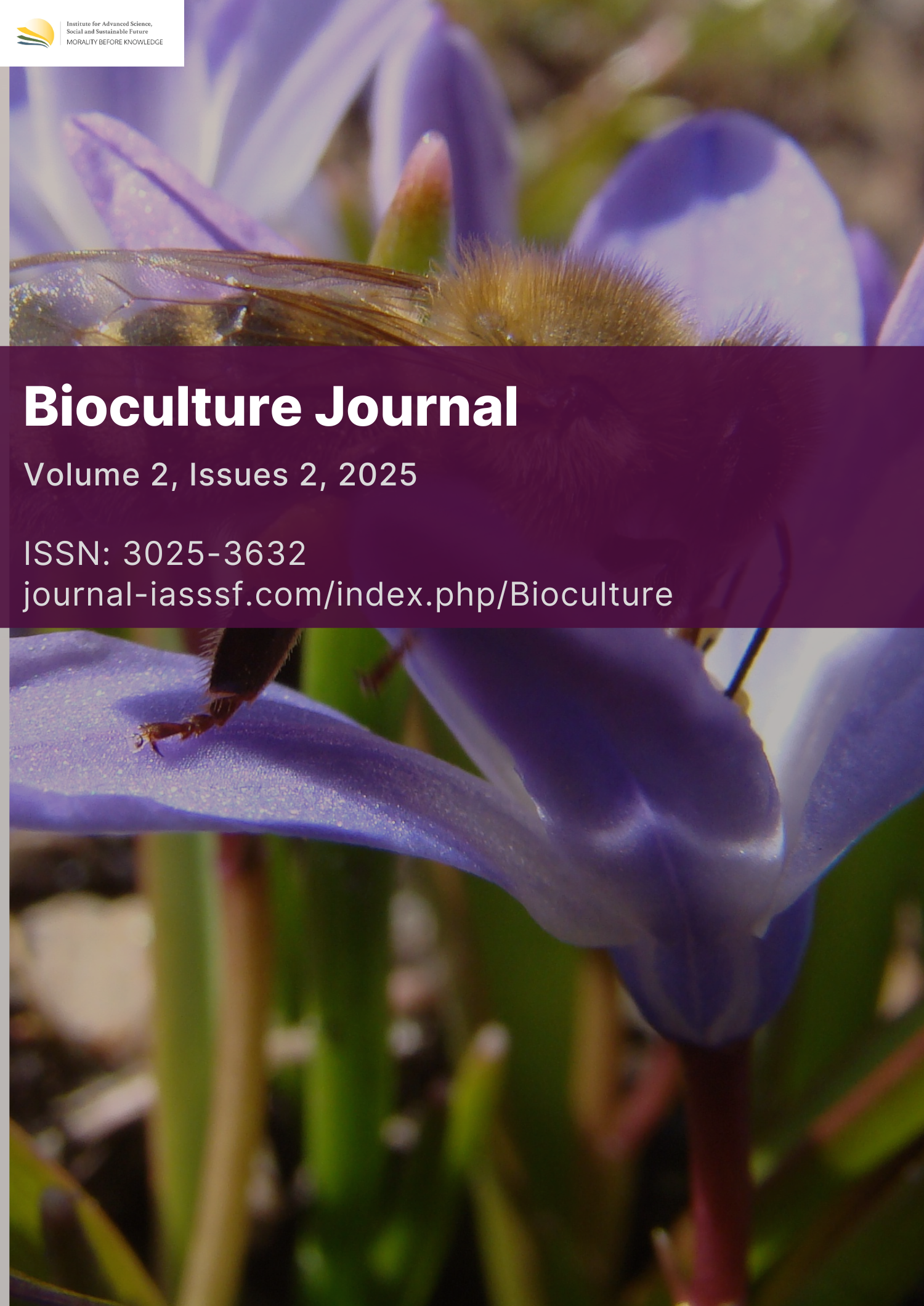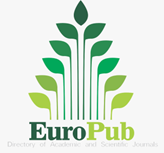Discovering the potential of renewable energy from palm oil mill effluent: Environmental impacts, opportunities, and challenges in the development of biogas and bio-cng
DOI:
https://doi.org/10.61511/bioculture.v2i2.2025.1295Keywords:
biogas, life cycle assessment., renewable energy, palm oil mill effluentAbstract
Background: Indonesia, as the largest palm oil-producing country in the world, will also produce palm oil mill effluent (POME). POME production from palm oil processing is faced with many environmental problems from the release of emissions. The development of new renewable energy in Indonesia needs to be increased to reduce dependence on fossil energy and commit to reducing greenhouse gas emissions. The purpose of this study is to discuss the potential for new renewable energy from the utilization of POME biogas energy and how the environmental impacts are caused as well as the opportunities and challenges of developing EBT from POME. Methods: This research analysis method is LCA, and descriptive. Findings: Total CO2 emission (eq) of biogas production from POME is -24.62 Kg CO2 (eq), eutrophication is -0.2188 Kg PO43- (eq) and acidification is 0.00552 Kg SO2 (eq). Biogas production from POME in Jambi Province is not optimal and has not been used optimally, the process efficiency is low, and the profitability is low. Conclusion: There is a need for a concept to utilize biogas energy that does not only focus on electrical energy but also as a renewable energy source such as bio-CNG which has wider use. Novelty/Originality of this article: The novelty of this research lies in the comprehensive analysis of the utilization of Palm Oil Mill Effluent (POME) as a renewable energy source that is not only limited to electrical energy but also includes the potential conversion of POME into bio-CNG as a more flexible and sustainable alternative.
References
Ahmad, A., Buang, A., & Bhat, A. H. (2016). Renewable and sustainable bioenergy production from microalgal co-cultivation with palm oil mill effluent (POME): A review. Renewable and Sustainable Energy Reviews, 65, 214–234. https://doi.org/10.1016/j.rser.2016.06.084
Bappenas, K. P. P. N. /. (2019). Prosiding SDGs Annual Conference 2018. Indonesian Forum.
Begum, H., Alam, A. S. A. F., Er, A. C., & Ghani, A. B. A. (2019). Environmental sustainability practices among palm oil millers. Clean Technologies and Environmental Policy, 21(10), 1979–1991. https://doi.org/10.1007/s10098-019-01744-7
Begum, S., D. A. Murgayah, & S. F. Bt Abdullah. (2009). A techno-economic analysis of biogas plant from palm oil waste. 2009 3rd International Conference on Energy and Environment (ICEE), 71–77. https://doi.org/10.1109/ICEENVIRON.2009.5398668
Booneimsri, P., Kubaha, K., & Chullabodhi, C. (2018). Increasing power generation with enhanced cogeneration using waste energy in palm oil mills. Energy Science & Engineering, 6(3), 154–173. https://doi.org/10.1002/ese3.196
BPS. (2022). Statistik Kelapa Sawit Indonesia (S. S. T. Perkebunan, Ed.). Badan Pusat Statistik.
BPS. (2022). Provinsi Jambi Dalam Angka. Badan Pusat Statistik.
Chin, M. J., Poh, P. E., Tey, B. T., Chan, E. S., & Chin, K. L. (2013). Biogas from palm oil mill effluent (POME): Opportunities and challenges from Malaysia’s perspective. Renewable and Sustainable Energy Reviews, 26, 717–726. https://doi.org/10.1016/j.rser.2013.06.008
Chow, J. (2003). Energy Resources and Global Development. Science, 302(5650), 1528–1531. https://doi.org/10.1126/science.1091939
Creutzig, F., Ravindranath, N. H., Berndes, G., Bolwig, S., Bright, R., Cherubini, F., Chum, H., Corbera, E., Delucchi, M., Faaij, A., Fargione, J., Haberl, H., Heath, G., Lucon, O., Plevin, R., Popp, A., Robledo-Abad, C., Rose, S., Smith, P., Masera, O. (2015). Bioenergy and climate change mitigation: An assessment. GCB Bioenergy, 7(5), 916–944. https://doi.org/10.1111/gcbb.12205
Dincer, I. (2000). Renewable energy and sustainable development: A crucial review. Renewable and Sustainable Energy Reviews, 4(2), 157–175. https://doi.org/10.1016/S1364-0321(99)00011-8
Gozan, M., Aulawy, N., Rahman, S. F., & Budiarto, R. (2018). Techno-Economic Analysis of Biogas Power Plant from POME (Palm Oil Mill Effluent). International Journal of Applied Engineering Research, 13(8). https://www.ripublication.com/ijaer18/
Guinée, J. (2001). Handbook on life cycle assessment—Operational guide to the ISO standards. The International Journal of Life Cycle Assessment, 6(5), 255–255. https://doi.org/10.1007/BF02978784
Harahap, F., Leduc, S., Mesfun, S., Khatiwada, D., Kraxner, F., & Silveira, S. (2019). Opportunities to Optimize the Palm Oil Supply Chain in Sumatra, Indonesia. Energies, 12(3), 420. https://doi.org/10.3390/en12030420
IEA. (2019). Southeast Asia Energy Outlook 2019. IEA, Paris. https://www.iea.org/reports/southeast-asia-energy-outlook-2019
IPCC. (2019). 2019 Refinement to The 2006 IPCC Guidelines for National Greenhouse Gas Inventories. IPCC
IPCC. (2014). Summary for Policymakers (In: Climate Change 2014: Impacts, Adaptation, and Vulnerability. Part A: Global and Sectoral Aspects. Contribution of Working Group II to the Fifth Assessment Report of the Intergovernmental Panel on Climate Change [Field, C.B., V.R. Barros, D.J. Dokken, K.J. Mach, M.D. Mastrandrea, T.E. Bilir, M. Chatterjee, K.L. Ebi, Y.O. Estrada, R.C. Genova, B. Girma, E.S. Kissel, A.N. Levy, S. MacCracken, P.R. Mastrandrea, and L.L. White (Eds.)], p. 34). Cambridge University Press.
ISO (International Standard Organization). (2006). ISO 14040:2006, ISO/TC 207/SC 5. Environmental Management – Life Cycle Assessment – Principles and Framework. International Organization for Standardization, Genva.
Kakoty, S. (2018). Ecology, sustainability and traditional wisdom. Journal of Cleaner Production, 172, 3215–3224. https://doi.org/10.1016/j.jclepro.2017.11.036
Maršálek, J., Brož, P., & Bobák, M. (2020). Complex biogas membrane upgrading to BioCNG at agriculture biogas plant. Chemical Papers, 74(12), 4227–4239. https://doi.org/10.1007/s11696-020-01238-7
Miller, G. T., & Spoolman, S. E. (2010). Environmental Science. In Brooks/Cole, Cengange Learning USA.
Muhammad, K. I., Sharaai, A. H., Ismail, M. M., Harun, R., & Yien, W. S. (2019). Social implications of palm oil production through social life cycle perspectives in Johor, Malaysia. The International Journal of Life Cycle Assessment, 24(5), 935–944. https://doi.org/10.1007/s11367-018-1540-y
Murphy, D. J. (2007). Future prospects for oil palm in the 21st century: Biological and related challenges. European Journal of Lipid Science and Technology, 109(4), 296–306. https://doi.org/10.1002/ejlt.200600229
Mustikaningsih, D., Primiana, I., Sucherly, & Febrian, E. (2019). Partnership Strategy Model in Developing Renewable Power Plant: Case Study in Indonesia. European Research Studies Journal, 12(2), 41–63. https://doi.org/10.35808/ersj/1425
Odabaş Baş, G., & Aydınalp Köksal, M. (2022). Environmental and techno- economic analysis of the integration of biogas and solar power systems into urban wastewater treatment plants. Renewable Energy, 196, 579–597. https://doi.org/10.1016/j.renene.2022.06.155
Onoja, E., Chandren, S., Abdul Razak, F. I., Mahat, N. A., & Wahab, R. A. (2019). Oil Palm (Elaeis guineensis) Biomass in Malaysia: The Present and Future Prospects. Waste and Biomass Valorization, 10(8), 2099–2117. https://doi.org/10.1007/s12649-018-0258-1
Poblete, I. B. S., Araujo, O. de Q. F., & de Medeiros, J. L. (2020). Dynamic analysis of sustainable biogas-combined-cycle plant: Time-varying demand and bioenergy with carbon capture and storage. Renewable and Sustainable Energy Reviews, 131, 109997. https://doi.org/10.1016/j.rser.2020.109997
Purnomo, H., Okarda, B., Dermawan, A., Ilham, Q. P., Pacheco, P., Nurfatriani, Rajani, A., Kusnadi, Santosa, A., Saepudin, A., Gobikrishnan, S., & Andriani, D. (2019). Review on biogas from palm oil mill effluent (POME): Challenges and opportunities in Indonesia. IOP Conference Series: Earth and Environmental Science, 293(1). https://doi.org/10.1088/1755- 1315/293/1/012004
Rianawati, E., Sagala, S., Hafiz, I., Anhorn, J., Alemu, S., Hilbert, J., Rosslee, D., Mohammed, M., Salie, Y., Rutz, D., Rohrer, M., Sainz, A., Kirchmeyr, F., Zacepins, A., & Hofmann, F. (2021). The potential of Biogas in Energy Transition in Indonesia. IOP Conference Series: Materials Science and Engineering, 1143(1), 012031. https://doi.org/10.1088/1757- 899X/1143/1/012031
Santika, W. G., Urmee, T., Simsek, Y., Bahri, P. A., & Anisuzzaman, M. (2020). An assessment of energy policy impacts on achieving Sustainable Development Goal 7 in Indonesia. Energy for Sustainable Development, 59, 33–48. https://doi.org/10.1016/j.esd.2020.08.011
Saputro, S. H., & Sudibandriyo, M. (2020). Feasibility Study of Biogas Upgrading Facility Development from Anaerobic Digestion of Palm Oil Mill Effluent in Indonesia. SSRN Electronic Journal. https://doi.org/10.2139/ssrn.3796135
Shane, A., Gheewala, S. H., & Phiri, S. (2017). Rural domestic biogas supply model for Zambia. Renewable and Sustainable Energy Reviews, 78, 683–697. https://doi.org/10.1016/j.rser.2017.05.008
Sodri, A., & Septriana, F. E. (2022). Biogas Power Generation from Palm Oil Mill Effluent (POME): Techno-Economic and Environmental Impact Evaluation. Energies (Basel), 15(19), 7265. https://doi.org/10.3390/en15197265
Styles, D., Dominguez, E. M., & Chadwick, D. (2016). Environmental balance of the UK biogas sector: An evaluation by consequential life cycle assessment. Science of The Total Environment, 560–561, 241–253. https://doi.org/10.1016/j.scitotenv.2016.03.236
Theo, W. L., Lim, J. S., Ho, W. S., Hashim, H., Lee, C. T., & Muis, Z. A. (2017). Optimisation of oil palm biomass and palm oil mill effluent (POME) utilisation pathway for palm oil mill cluster with consideration of BioCNG distribution network. Energy, 121, 865–883. https://doi.org/10.1016/j.energy.2017.01.021
Tock, L., & Schummer, J. (2017). Sustainable waste-to-value biogas plants for developing countries. Waste Management, 64, 1–2. https://doi.org/10.1016/j.wasman.2017.05.014
Ullah Khan, I., Hafiz Dzarfan Othman, M., Hashim, H., Matsuura, T., Ismail, A. F., Rezaei-DashtArzhandi, M., & Wan Azelee, I. (2017). Biogas as a renewable energy fuel – A review of biogas upgrading, utilisation and storage. Energy Conversion and Management, 150, 277–294. https://doi.org/10.1016/j.enconman.2017.08.035
Widya, Y. S., & Tjahjono, B. (2019). Stakeholder Mapping and Analysis of the Renewable Energy Industry in Indonesia. Energies, 12(4), 602. https://doi.org/10.3390/en12040602
Yadav, D. S., Jaiswal, B., Gautam, M., & Agrawal, M. (2020). Soil Acidification and its Impact on Plants. In P. Singh, S. K. Singh, & S. M. Prasad (Eds.), Plant Responses to Soil Pollution (pp. 1–26). Springer Singapore. https://doi.org/10.1007/978-981-15-4964-9_1
Yang, L., Wang, C., Yu, H., Yang, M., Wang, S., Chiu, A. S. F., & Wang, Y. (2020). Can an island economy be more sustainable? A comparative study of Indonesia, Malaysia, and the Philippines. Journal of Cleaner Production, 242, 118572. https://doi.org/10.1016/j.jclepro.2019.118572
Yoshizaki, T., Shirai, Y., Hassan, M. A., Baharuddin, A. S., Abdullah, N. M. R., Sulaiman, A., & Busu, Z. (2012). Economic analysis of biogas and compost projects in a palm oil mill with clean development mechanism in Malaysia. Environment, Development and Sustainability, 14(6), 1065–1079. https://doi.org/10.1007/s10668-012-9371-7
Yu, X., Geng, Y., Dong, H., Fujita, T., & Liu, Z. (2016). Emergy-based sustainability assessment on natural resource utilization in 30 Chinese provinces. Journal of Cleaner Production, 133, 18–27. https://doi.org/10.1016/j.jclepro.2016.05.103
Zhou, H., Yang, Q., Gul, E., Shi, M., Li, J., Yang, M., Yang, H., Chen, B., Zhao, H., Yan, Y., Erdoğan, G., Bartocci, P., & Fantozzi, F. (2021). Decarbonizing university campuses through the production of biogas from food waste: An LCA analysis. Renewable Energy, 176, 565–578. https://doi.org/10.1016/j.renene.2021.05.007
Downloads
Published
How to Cite
Issue
Section
Citation Check
License
Copyright (c) 2025 Donar Sagala, Evi Frimawaty, Ahyahudin Sodri

This work is licensed under a Creative Commons Attribution 4.0 International License.

















